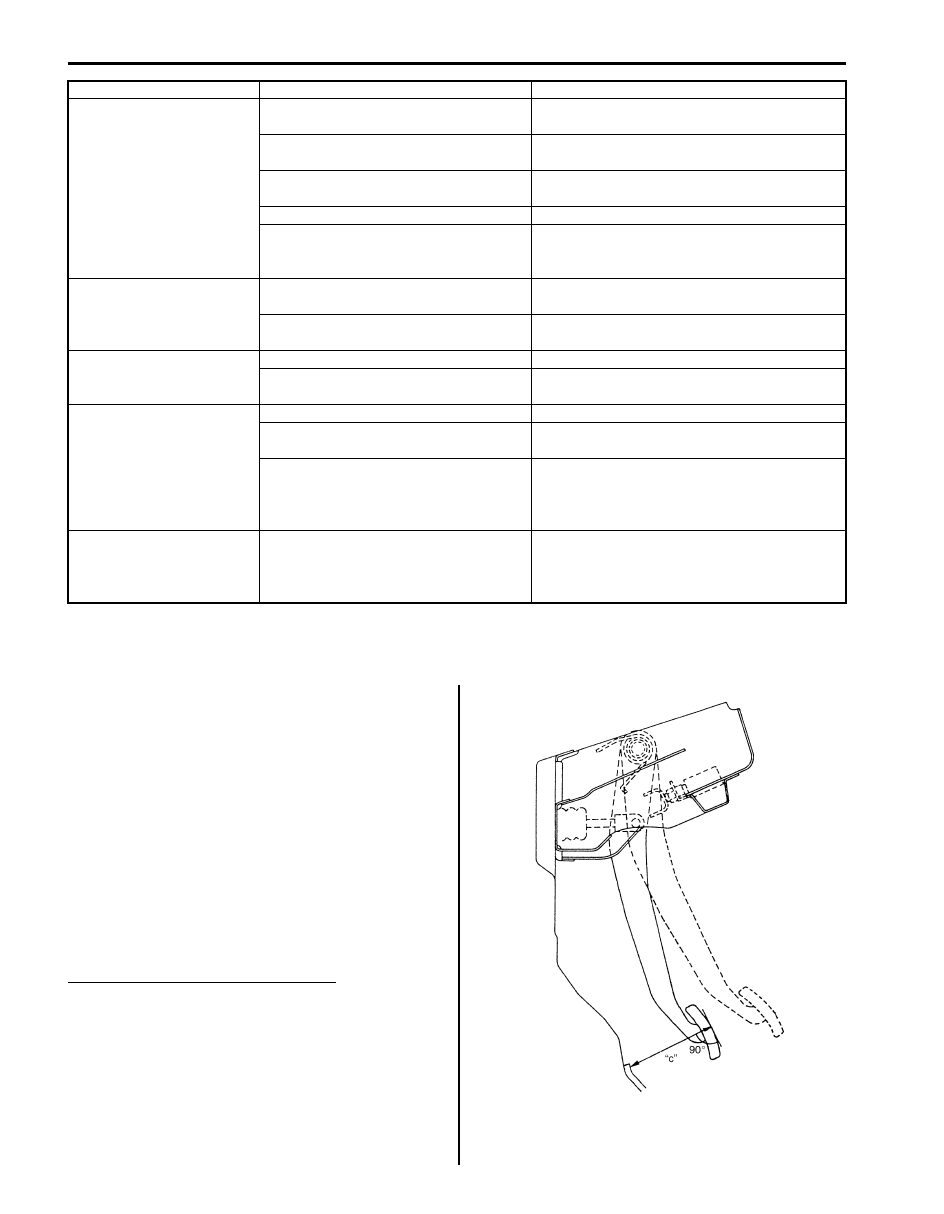Suzuki Grand Vitara JB627. Manual - part 172

4A-7 Brake Control System and Diagnosis:
Repair Instructions
Excessive Pedal Travel Check
S6JB0B4106001
1) Start engine.
2) Depress brake pedal a few times.
3) With brake pedal depressed with approximately 30
kg (66 lbs) load, measure pedal to carpet clearance
“c”.
If clearance “c” is less than specification, the most
possible cause is either rear brake shoes are worn
out beyond limit or air is in lines.
Should clearance “c” remain less than specification
even after replacement of brake shoes and bleeding
of system, other possible but infrequent cause is
malfunction of rear brake shoe adjusters or booster
push rod length out of adjustment.
Brake pedal arm to wall clearance “c”
When pedal depressed at 300 N (30 kg, 66 lbs): Over
70 mm (2.75 in.)
Brake warning light turns
ON after engine start
Parking brake applied
Release parking brake and check that brake
warning light turns off.
Insufficient amount of brake fluid
Investigate leaky point, correct it and add
brake fluid.
Brake fluid leaking from brake line
Investigate leaky point, correct it and add
brake fluid.
Brake warning light circuit faulty
Repair circuit.
Malfunctioning EBD system
Check system referring to “ABS Check in
Section 4E” or “ESP
Brake warning light turns
on when brake is applied
Brake fluid leaking from brake line
Investigate leaky point, correct it and add
brake fluid.
Insufficient amount of brake fluid
Investigate leaky point, correct it and add
brake fluid.
Brake warning light fails
to turn on even when
parking brake is applied
Bulb burnt out
Replace bulb.
Brake warning light circuit faulty
Repair circuit.
ABS warning light does
not turn ON for 2 – 3 sec.
after ignition switch has
turned ON
Bulb burnt out
Replace bulb.
ABS warning light circuit open (including
check relay)
Repair or replace.
Malfunctioning ABS (ESP
®)
Check system referring to “ABS Warning Light
Does Not Come ON at Ignition Switch ON in
Section 4E” or “ESP
Come ON at Ignition Switch ON in Section 4F”.
ABS warning light
remains ON after ignition
switch has turned ON for
2 – 3 sec.
Malfunctioning ABS (ESP
®)
Check system referring to “ABS Warning Light
Comes ON Steady in Section 4E” or “ESP
Warning Light Comes ON Steady in Section
4F”.
Condition
Possible cause
Correction / Reference Item
IYSQ01410009-01